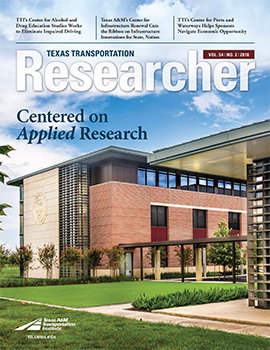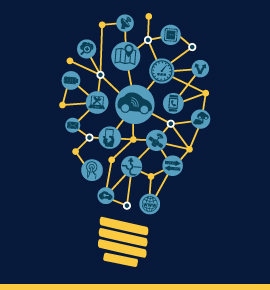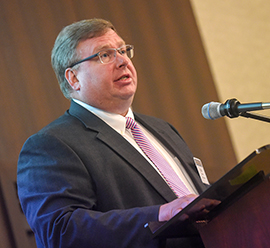With the ability to make it rain at will, The Texas A&M University System’s RELLIS Campus will soon boast a 1,000-foot-long, 50-foot-wide rain range thanks to a $1.6 million investment by the 3M Company. The range will be used to test interactions between vehicle sensors and highway infrastructure under wet conditions at speeds of up to 60 mph. The sensors are essential to emerging technologies that support self-driving cars, as well as to systems enabling them to connect and communicate with roadway signs, signals and lane markings.

A&M System Chancellor John Sharp announced the partnership at the Third Annual Texas A&M Transportation Technology Conference May 7–9, hosted by the Texas A&M Transportation Institute (TTI). Attendees included officials from city, state and federal transportation agencies; automakers; consultants; educators; and researchers.
“No testing facility anywhere can match the potential of the RELLIS Campus as we work to build systems that enable safe and reliable communication between cars and our roadways,” TTI Agency Director Greg Winfree told attendees. “And TTI is both proud and grateful to have 3M as a valued partner in that mission.”
The theme of this year’s conference was preparing for connected automation. Some 250 transportation professionals traveled to College Station, Texas, to discuss the various issues facing the private and public sectors as connected and automated vehicles (CAVs) grow closer to becoming a reality. From issues of security to the need for seamless communication among vehicles and between vehicles and infrastructure, this year’s conference asked the hard questions necessary to ensure a seamless transition to a connected transportation system.

“[3M] will substantially enhance and expand our research capabilities at RELLIS,” Sharp told conference goers. “It will provide more opportunities for education and training for the next generation of the transportation workforce. This is also an exciting example of how the A&M System can work with private industry in all fields to address the challenging issues of today and tomorrow.”
The 3M collaboration with Texas A&M and TTI represents the first major industry partnership at the new RELLIS Campus. In addition to funds for the rain range, the 3M investment will help purchase research equipment and support graduate students participating in CAV research.
“What talent will we need to help us realize the future of connected and automated vehicles?” asked Bob Anderson, 3M vice president of research and development. “We believe that sponsoring graduate students at the Ph.D. level is an important part of acting like a leader in this space.” Anderson urged others at the conference, especially private-sector representatives, to step up and do the same.
The TTI-hosted conference examined some of the numerous broad and complex questions surrounding CAV implementation, including the following:
- How quickly will the public embrace these new disruptive transportation technologies?
- What impact will CAVs have on employment and the economy?
- Will CAVs initially create more congestion?
- What will the impact be on insurance carriers and policyholders?
- Will there be enough trained engineers available for the future?
Recognizing that CAVs still hold many unknowns as the area develops, presenters at the conference spoke with one voice: planning, collaboration, research and education are all vital in successfully navigating the uncertainties ahead.
“Right now our efforts are in proving these new technologies and demonstrating how these things are going to work,” Anderson said during the closing panel, titled Collaboration to Accelerate Deployment. “We believe we will discover things by working together. All roads lead to College Station, Texas, with our extended collaboration.”
Anderson predicted new educational disciplines will emerge as a result of the focus on transportation technologies. “The future has to start today. In the 1950s, it was rocket science. Autonomous vehicles today — that is the new rocket science.”


